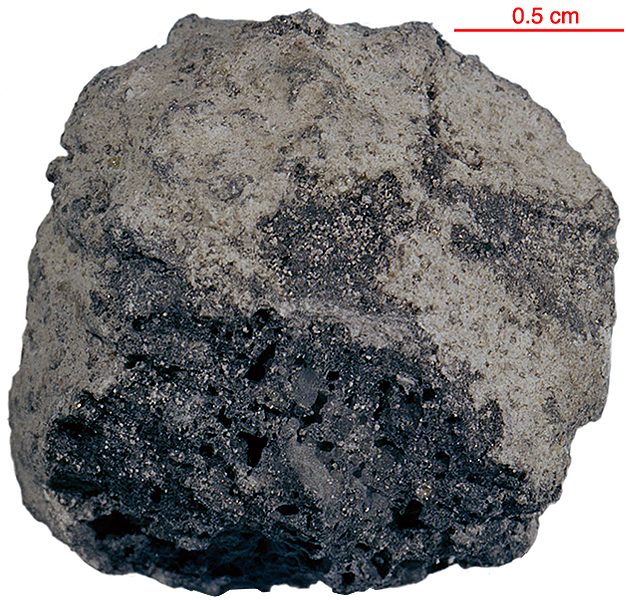
Fact sheet
15436 was a < 1 cm particle sieved from the lunar soil. It is a round black and white rock with a chalky white dust covering. 15436 is a vesicular, fine-grained melt with included mineral grains and lithic fragments. The groundmass has a granular texture with many lath-shaped plagioclase feldspar crystals and tiny ilmenite blades. Interstitial glass is common. Clasts include plagioclase feldspar, pyroxene (rotation 1) and lithic fragments (rotation 2) up to 600 microns across. Troilite and metallic iron is also visible in reflected light. Note the thin section is slightly thick.
The sample weighed 3.5 grams before analysisIt was not possible to accurately date this sample.
Further details of this and other Apollo samples are here: http://curator.jsc.nasa.gov/lunar/
The Apollo 15 landing site was in the Apennine Highlands, and close to Hadley Rille — a long, narrow winding valley. Approximately 76 kg of lunar material, including soil, rock, core-tube and deep-core samples, were returned to Earth.
This mission was the first flight of the Lunar Roving Vehicle which allowed the astronauts to venture further from the Lunar Module than in previous missions. During three periods of extravehicular activity, or EVA, on July 31st, and August 1st and 2nd, Scott and Irwin completed a record 18 hours, 37 minutes of exploration, travelling 17.5 miles, in the first car that humans had ever driven on the Moon.
Apollo 15 was launched on 26 July 1971.






